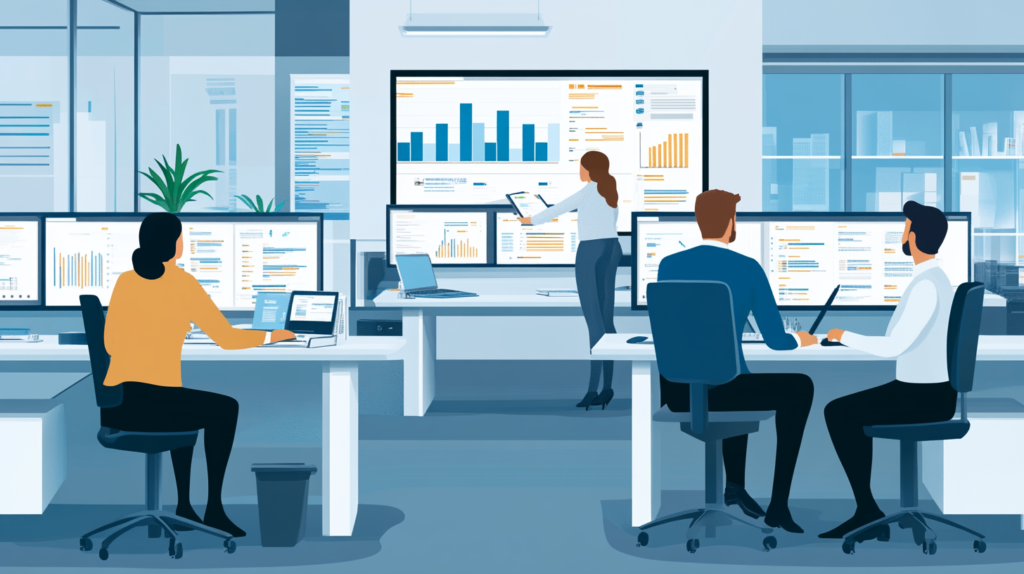Pros & Cons of Employee Monitoring: The Truth Every Employer Needs to Know!

Employee monitoring has become a hot topic in todays digital workplace. As businesses strive to enhance productivity and security, they often turn to various monitoring techniques. However, understanding the pros and cons of employee monitoring is crucial to implementing it effectively. In this article, we will explore the benefits and drawbacks of employee monitoring, providing a comprehensive overview to help businesses make informed decisions. By weighing the advantages and potential downsides, you can determine the best approach to employee monitoring that aligns with your companys values and objectives.
Table of Contents
- What is Employee Monitoring?
- Types of Employee Monitoring
- Benefits of Employee Monitoring
- Drawbacks of Employee Monitoring
- How to Implement Employee Monitoring
- Best Practices for Employee Monitoring
- How Deskcove Can Help
- FAQ
What is Employee Monitoring?
Employee monitoring refers to the various methods employers use to oversee and track their employees’ activities and performance during work hours. This practice can involve software tools that record computer activity, video surveillance and even keystroke logging. As technology advances, more businesses are adopting employee monitoring to ensure productivity and security. However, like any practice, it has its pros and cons.

Types of Employee Monitoring
Employee monitoring encompasses a variety of methods designed to track different aspects of employee activity. By understanding the different types of monitoring, businesses can choose the most appropriate tools for their needs.
Computer Activity Monitoring
One common method of employee monitoring involves tracking computer activity. This can include monitoring internet usage, application usage and even specific keystrokes. By understanding how employees use their computers, businesses can identify areas for improvement and ensure productive use of company resources.
Video Surveillance
Video surveillance is another popular form of employee monitoring. Cameras can be placed in strategic locations to oversee employee activities and ensure compliance with company policies. This method is particularly useful in environments where security and safety are critical concerns.
Time Tracking Software
Time tracking software helps businesses monitor how employees allocate their time across various tasks and projects. This method can improve time management and help managers identify areas where efficiency can be improved.
Benefits of Employee Monitoring
The main pros cons employee monitoring points to the dual nature of this practice. On the positive side, one of the biggest advantages of employee monitoring is increased productivity. When employees know their activities are being tracked, they are more likely to stay focused and complete their tasks efficiently. This enhanced productivity can lead to significant business growth.
Another benefit is employee accountability. Monitoring systems can track who is responsible for specific tasks, reducing the likelihood of errors and ensuring everyone is pulling their weight. This system of accountability can improve overall team performance.
Employee monitoring also helps in improved time management. By analyzing how employees spend their time, managers can identify areas where time is wasted and implement strategies to streamline workflows. This can lead to a more efficient and productive workplace.
Furthermore, monitoring aids in performance tracking. Regular tracking of employee performance allows managers to provide timely feedback, recognize high performers and address issues before they become significant problems. This continuous feedback loop can enhance employee development and satisfaction.
Lastly, employee monitoring contributes to enhanced security. By keeping an eye on employee activities, businesses can detect and prevent security breaches, protect sensitive information and ensure compliance with data protection regulations.
Drawbacks of Employee Monitoring
While there are many benefits, pros & cons employee monitoring also highlights potential downsides. One significant concern is potential privacy issues. Employees may feel that monitoring invades their privacy, leading to discomfort and dissatisfaction.
Another drawback is the possibility of decreased employee morale. Constant surveillance can create a stressful work environment where employees feel mistrusted and undervalued. This can negatively impact their motivation and overall job satisfaction.
There are also trust concerns. When employees know they are being monitored, it can erode the trust between them and their employers. Trust is crucial for a healthy workplace culture and its absence can lead to increased turnover and lower productivity.
Employee monitoring carries the risk of micromanagement. Overly detailed monitoring can lead managers to micromanage, stifling employees creativity and independence. This can hinder innovation and make employees feel suffocated.
Lastly, businesses must consider legal compliance. Depending on the jurisdiction, there are various laws and regulations governing employee monitoring. Employers must ensure they comply with these laws to avoid legal repercussions and maintain ethical standards.
How to Implement Employee Monitoring
Implementing employee monitoring requires careful planning and consideration to ensure it is effective and respects employees’ rights. Here are some key steps to follow when setting up a monitoring system.
Develop a Clear Policy
Before implementing employee monitoring, it is essential to develop a clear policy that outlines the scope, methods, and purpose of monitoring. This policy should be communicated to all employees to ensure transparency and compliance.
Choose the Right Tools
Selecting the appropriate monitoring tools is crucial for effective implementation. Businesses should choose tools that align with their monitoring objectives and respect employee privacy. There are various software solutions available that offer customizable monitoring features.
Provide Training
Providing training for both managers and employees on how the monitoring system works can help alleviate concerns and ensure everyone understands its purpose. Training can also help employees use the monitoring tools effectively and efficiently.
Best Practices for Employee Monitoring
To ensure employee monitoring is effective and maintains a positive work environment, it is important to follow best practices. These practices can help balance the benefits of monitoring with the need to respect employee rights.
Respect Employee Privacy
While monitoring is important, it is equally important to respect employee privacy. Businesses should avoid invasive monitoring practices and focus on monitoring work-related activities. Balancing monitoring with privacy can help maintain trust and morale.
Use Monitoring Data Constructively
Data collected through monitoring should be used constructively to improve productivity and performance. Providing regular feedback and using data to identify areas for improvement can help employees grow and develop.
Regularly Review and Update Policies
Employee monitoring policies should be regularly reviewed and updated to reflect changes in technology and regulations. This ensures that monitoring practices remain relevant and compliant with legal standards.
How Deskcove Can Help
Deskcove offers a balanced approach to employee monitoring. Our software provides comprehensive tracking features that enhance productivity and security while respecting employee privacy. With Deskcove, you can monitor performance and ensure accountability without overstepping boundaries. Our tools are designed to help managers improve time management and performance tracking effectively.
Moreover, Deskcove’s features include customizable monitoring levels, ensuring that your business remains compliant with legal standards. We believe in fostering a positive workplace culture where trust and respect are paramount. Our platform helps achieve this balance, making employee monitoring a tool for growth rather than a source of contention.
FAQ
Is employee monitoring legal?
Yes, employee monitoring is legal in many jurisdictions, provided it complies with specific regulations. Employers should inform employees about the monitoring practices and ensure they adhere to data protection laws.
How can employee monitoring improve productivity?
By tracking employees’ activities, businesses can identify inefficiencies and implement strategies to enhance productivity. Employees are also likely to stay focused and work efficiently when they know their activities are being monitored.
Can employee monitoring affect employee morale?
Yes, excessive monitoring can lead to decreased employee morale, as it may create a stressful work environment and erode trust. It is essential to find a balance that ensures productivity without compromising employee well-being.
What are the security benefits of employee monitoring?
Employee monitoring can help detect and prevent security breaches, protect sensitive information, and ensure compliance with data protection regulations. This contributes to the overall security of the business.
How does Deskcove support legal compliance in employee monitoring?
Deskcove offers customizable monitoring levels and ensures that your business remains compliant with relevant laws and regulations. Our platform is designed to respect employee privacy while providing comprehensive tracking features.
